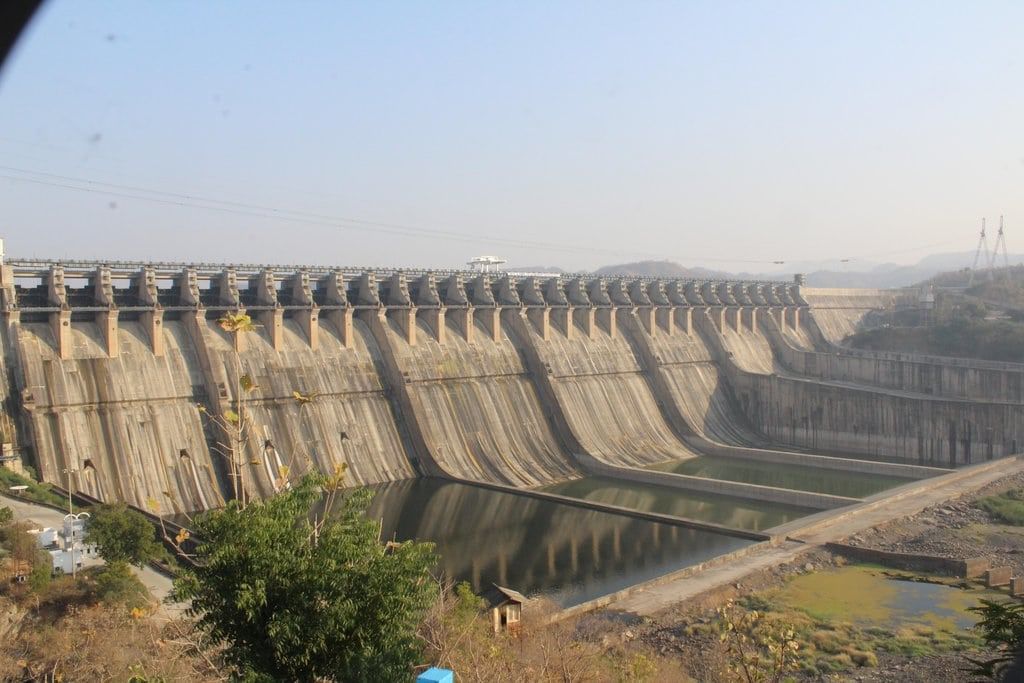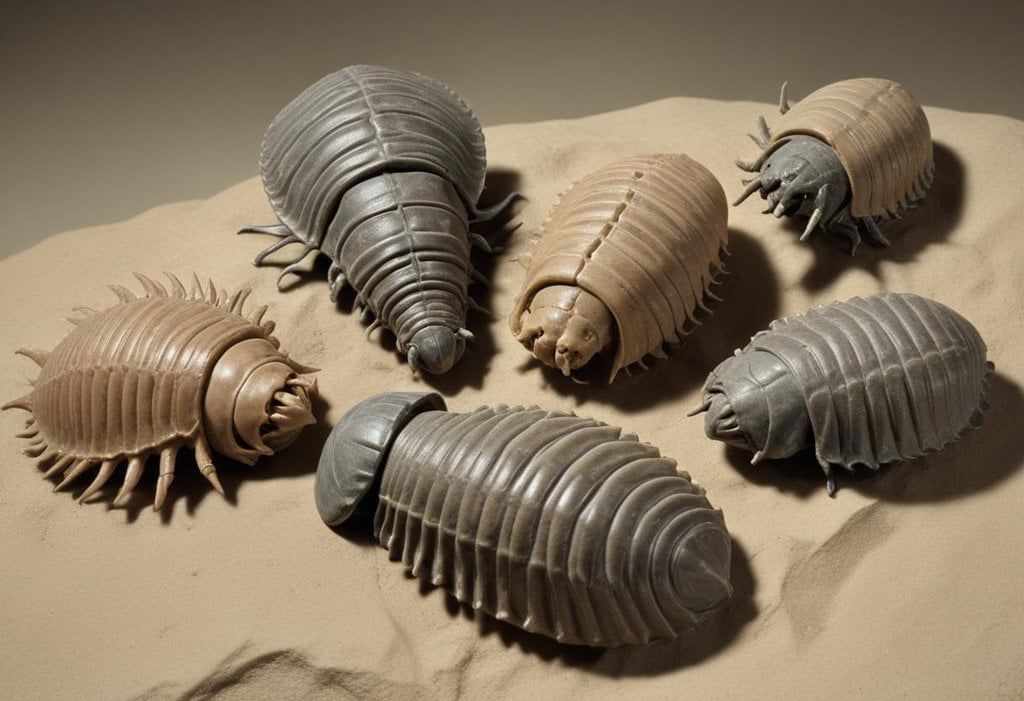UPSC Daily Current Affairs- 15th September 2024 | Current Affairs & Hindu Analysis: Daily, Weekly & Monthly PDF Download
| Table of contents |

|
| Central Pollution Control Board (CPCB) |

|
| Sardar Sarovar Dam |

|
| Trilobites |

|
| Chamran-1 Research Satellite |

|
| Bio-decomposer |

|
| INDUS-X Summit |

|
| Neuromorphic Computing Technology |

|
GS1/ History and Culture
Siddha Medicine
Source: The Hindu
Why in News?
A combination of 'Siddha' drugs can reduce anaemia among adolescent girls, according to a recent study.
About Siddha Medicine:
- Siddha medicine is a traditional healing system that started in South India and is one of the oldest forms of medicine in India.
- Historical texts from the Sangam Era suggest that this system dates back to around 10,000 BC.
- The Siddha system was developed by Siddhars, who primarily lived in Tamil Nadu.
- Siddhars were spiritual leaders known for possessing eight special abilities called siddhis. Some of the notable 18 Siddhars include Nandi, Agasthyar, Agappai, and Pumbatti.
- The Siddha medical tradition is believed to have been initiated by Agastyar, also referred to as Agasthya.
- In rural India, Siddhars have typically learned their skills from older members of their communities.
- The Siddha system combines ancient medical practices with spirituality, alchemy, and mysticism.
- This medicinal system not only aims to cure diseases but also considers the patient’s behavior, environment, age, habits, and physical condition.
- It is based on several key principles, including:
- Panchamahabhootam (five basic elements)
- 96 thathuvas (principles)
- Mukkuttram (3 humours)
- 6 arusuvai (6 tastes)
- The five elements recognized in the Siddha system are:
- Soil
- Fire
- Water
- Sky
- Air
- Siddha practitioners believe these elements exist in everything from food to the humours of the human body, as well as in herbal, animal, and inorganic substances like sulphur and mercury.
- These elements have therapeutic properties and can be used to treat various illnesses.
GS3/Environment
Central Pollution Control Board (CPCB)
Source: The Hindu
Why in News?
The National Green Tribunal has directed the Central Pollution Control Board to file a fresh status report on the generation and treatment of electronic waste by all the states.
About Central Pollution Control Board (CPCB):
- CPCB was established in September 1974 under the Water (Prevention and Control of Pollution) Act, 1974.
- It was given responsibilities under the Air (Prevention and Control of Pollution) Act, 1981.
- The board acts as a field organization and offers technical support to the Ministry of Environment, Forest and Climate Change, according to the Environment (Protection) Act, 1986.
Key Functions of CPCB
- To promote the cleanliness of streams and wells across various states by preventing and controlling water pollution.
- To enhance air quality and prevent or control air pollution throughout the country.
- To provide advice to the Central Government regarding the control and reduction of air and water pollution.
Standard Development Activities
- CPCB develops and updates Environmental Standards and enhances the Comprehensive Industrial Document (COINDS) along with guidelines for managing the environment in different industrial sectors.
- In coordination with the relevant state government, CPCB establishes standards for the quality of streams, wells, and air, and creates manuals, codes, and guidance for treating and disposing of sewage and industrial waste.
Standards Developed by CPCB
- National Ambient Air Quality
- Water Quality Criteria from various sources
- Standards for the Emission or Discharge of environmental pollutants from different industries, as per the Environment Protection Rules, 1986
- Standards for the treatment and disposal of Bio-Medical Waste through Incineration
- Emission standards and noise limits for Diesel Engines
- Emission and noise limits for LPG and CNG Generator Sets
Minimal National Standards (MINAS)
- CPCB also sets Minimal National Standards(MINAS) specific to various industry categories regarding:
- Effluent discharge (water pollutants)
- Emissions (air pollutants)
- Noise levels
- Solid waste management
- These standards must be adopted by State Governments as the minimum requirements.
GS1/Geography
Sardar Sarovar Dam
Source: The Hindu
Why in News?
The water level of Gujarat's Sardar Sarovar Dam went up to 136.43 metres recently, over two metres short of its full reservoir level.
About Sardar Sarovar Dam:
The Sardar Sarovar Dam is a significant concrete gravity dam built on the Narmada River at Kevadia in Gujarat’s Narmada district. Here are the key details about the dam:
- Construction and Height: Completed in 2017, the Sardar Sarovar Dam stands 163 meters tall, making it the third highest concrete dam in India. The two taller dams are the Bhakra Dam in Himachal Pradesh (226 meters) and the Lakhwar Dam in Uttar Pradesh (192 meters).
- Concrete Volume: In terms of the volume of concrete used, the Sardar Sarovar Dam is the second largest gravity dam in the world, following the Grand Coulee Dam in the USA.
- Part of a Larger Project: The dam is a key component of the Narmada Valley Project, which involves the construction of a series of large dams on the Narmada River for irrigation and hydroelectric power generation.
- Catchment Area and Spillway: The catchment area above the dam covers 88,000 square kilometers, and the spillway has a discharge capacity of 87,000 cubic meters per second.
- Canal Network: The dam features the longest canal network in the world, including the Narmada Main Canal, approximately 2,500 km of branch canals, 5,500 km of distributaries, and other associated channels.
- Narmada Main Canal: The Narmada Main Canal, which is 458.3 km long with a capacity of 1,133 cubic meters per second, is the largest irrigation-lined canal in the world.
- Power Sharing: Hydroelectric power generated by the dam is shared among the states of Madhya Pradesh, Maharashtra, and Gujarat in the ratios of 57:27:16, respectively.
GS3/ Environment
Trilobites
Source: The Hindu
Why in News?
A new study finds that a trilobite species with exceptionally well-preserved fossils from upstate New York has an additional set of legs underneath its head.
About Trilobites:
- Trilobites were a group of extinct marine arthropods recognized for their distinctive three-part body structure.
- The name "trilobite" comes from the Latin word meaning "three-part-body."
- These creatures first appeared around 521 million years ago, shortly after the beginning of the Cambrian period.
- Trilobites thrived throughout most of the Paleozoic Era for nearly 300 million years.
- Trilobites went extinct at the end of the Permian period, 251 million years ago.
- Their extinction occurred during the Permian mass extinction event, which wiped out over 90% of all species on Earth.
Key Features of Trilobites
- Distinctive Body Structure: Trilobites are known for their unique three-lobed and three-segmented body form.
- Exoskeleton: Like other arthropods, trilobites had an external skeleton called an exoskeleton, made of chitinous material. They periodically shed this exoskeleton to grow, a process known as molting. Most fossilized trilobites are actually remnants of these molts.
- Complex Eyes: Trilobites were the first animals to develop complex eyes, showcasing advanced vision capabilities.
- Appendages: They were among the first organisms to have multiple appendages for movement. Some trilobites were capable of swimming, while others burrowed or crawled along muddy sea floors.
- Size Range: Trilobite fossils vary in size, with the smallest being a centimeter or less and the largest exceeding 70 centimeters in length.
What are Arthropods?
Arthropods are invertebrate animals characterized by a hard exoskeleton, a segmented body, and jointed appendages. They constitute about 75% of all animal species on Earth and inhabit every habitat, exhibiting a wide range of adaptations. Arthropods are classified into four major groups:
- Insects
- Myriapods (including centipedes and millipedes)
- Arachnids (such as spiders, mites, and scorpions)
- Crustaceans (including slaters, prawns, and crabs)
GS3/ Science and Technology
Chamran-1 Research Satellite
Source: Indian Express
Why in News?
Iran has successfully launched its research satellite, Chamran-1, into space recently.
About Chamran-1 Research Satellite:
Overview of the Chamran-1 Satellite
The Chamran-1 satellite is an Iranian research satellite that was designed and manufactured by Iranian engineers at Iran Electronics Industries (SAIran), a subsidiary of the defense ministry. The project involved collaboration with the Aerospace Research Institute and several private companies.
Key Details:
- Launch Vehicle: The satellite was launched into orbit at an altitude of 550 kilometers (341 miles) above the Earth's surface using the Ghaem-100 Space Launch Vehicle (SLV).
- Ghaem-100 Rocket: The Ghaem-100 rocket, which carried the Chamran-1 satellite, is manufactured by the Aerospace Force of the Islamic Revolutionary Guard Corps (IRGC). It is Iran's first three-stage solid-fuel satellite launcher.
- Weight and Mission: The Chamran-1 satellite weighs approximately 60 kilograms. Its primary mission is to test hardware and software systems for orbital maneuver technology validation. Additionally, it has secondary tasks, including assessing the performance of cold gas propulsion subsystems in space systems and evaluating navigation and attitude control subsystems.
Launch Details
The Chamran-1 satellite was successfully launched by the Iranian Space Agency on September 27, 2023. It was placed into a low Earth orbit (LEO) at an altitude of approximately 550 kilometers (341 miles) above the Earth's surface.
Key Objectives
Primary Mission
- The primary mission of the Chamran-1 satellite is to test and validate hardware and software systems for orbital maneuver technology. This involves assessing the satellite's ability to perform maneuvers in space, which is crucial for various applications, including satellite positioning and orbit adjustments.
Secondary Tasks
- Cold Gas Propulsion Subsystems: The satellite will evaluate the performance of cold gas propulsion subsystems in space systems. Cold gas propulsion is a method used for attitude control and maneuvering in space.
- Navigation and Attitude Control: The Chamran-1 satellite will also assess the performance of navigation and attitude control subsystems. These systems are essential for maintaining the satellite's orientation and position in orbit.
Technical Specifications
Ghaem-100 Launch Vehicle
- Type: Three-stage solid-fuel satellite launcher.
- Manufacturer: Aerospace Force of the Islamic Revolutionary Guard Corps (IRGC).
- Notable Achievement: First of its kind in Iran, demonstrating the country's advancements in satellite launch technology.
Chamran-1 Satellite
- Weight: Approximately 60 kilograms.
- Design and Manufacturing: Developed by Iranian engineers at Iran Electronics Industries (SAIran) in collaboration with the Aerospace Research Institute and private companies.
- Mission Focus: Testing and validating orbital maneuver technology, cold gas propulsion, and navigation and attitude control systems.
GS3/ Environment
Bio-decomposer
Source: The Hindu
Why in News?
Recently, the environment minister said that the Delhi government has started preparations to spray bio-decomposer over 5,000 acres of farmland in New Delhi.
About Bio-decomposer:
The bio-decomposer is a microbial liquid spray designed to address the issue of paddy stubble burning. Developed by the Indian Agricultural Research Institute (IARI), this innovative solution breaks down paddy stubble when sprayed onto it, facilitating its absorption into the soil. This process eliminates the need for farmers to burn the stubble, thereby promoting sustainable agricultural practices.
Application and Implementation
- The government has been actively promoting the bio-decomposer solution by spraying it free of cost over farmlands in outer Delhi since 2020.
- It has also been utilized by various states, including Punjab,Haryana,Uttar Pradesh, and the National Capital Territory of Delhi.
Advantages of Bio-Decomposer
- Pollution Reduction: By using the bio-decomposer, farmers can avoid burning paddy stubble, significantly reducing air pollution.
- Soil Fertility Improvement: The bio-decomposer enriches the soil with Organic Carbon (OC), essential nutrients, and enhances soil biological and physical properties.
- Cost-Effective and Practical: This method is not only efficient and effective but also cheaper and practical for farmers to implement.
- Eco-Friendly: The bio-decomposer is an environmentally friendly technology that contributes to sustainable farming practices.
Conclusion
The bio-decomposer represents a significant advancement in agricultural technology, offering a practical solution to the problem of paddy stubble burning. By promoting soil health and reducing pollution, it aligns with the goals of sustainable agriculture and environmental conservation.
GS2/International Relations
INDUS-X Summit
Source: Economic Times
Why in News?
The third edition of the INDUS-X Summit concluded in the United States, marking a progress in the advancement of a joint defence innovation ecosystem in India and the USA.
About INDUS-X Summit
- The INDUS-X Summit was inaugurated in 2023 during the official visit of the Prime Minister of India to the United States.
- Goal: To enhance strategic technology partnerships and defense industrial collaboration among governments, businesses, and academic institutions in both India and the U.S.
- INDUS-X aims to serve as a defense innovation bridge, encompassing various initiatives such as:
- Joint Challenges
- Joint Innovation Fund
- Engagement with academia
- Connecting industry with startups
- Private sector investment in defense projects
- Expert mentoring
- Niche technology projects
- Focus on promoting advanced high-tech cooperation and facilitating joint research, development, and production opportunities in the defense sector.
- Aims to explore co-production possibilities for advanced military equipment such as jet engines, long-range artillery, and infantry vehicles.
- The initiative is guided by Innovations for Defence Excellence (iDEX) on behalf of the Ministry of Defence in India and the Defence Innovation Unit (DIU) under the U.S. Department of Defense.
What is Innovations for Defence Excellence?
- Innovations for Defence Excellence (iDEX) is a flagship program initiated by the Ministry of Defence, Government of India, in 2018.
- The program aims to foster an innovation ecosystem within the Defence and Aerospace sectors by collaborating with various stakeholders, including startups, innovators, micro, small and medium enterprises (MSMEs), incubators, and academic institutions.
- iDEX provides grants and support for research and development (R&D) projects that have significant potential for future adoption in Indian defence and aerospace.
- The funding and management of iDEX are overseen by a Defence Innovation Organization (DIO), established as a not-for-profit company under the Companies Act 2013. The DIO is founded by Defence Public Sector Undertakings (DPSUs) such as Hindustan Aeronautics Limited (HAL) and Bharat Electronics Limited (BEL).
GS3/ Science and Technology
Neuromorphic Computing Technology
Source: The Hindu
Why in News?
Scientists at the IISc, Bengaluru, are reporting a momentous breakthrough in neuromorphic, or brain-inspired, computing technology that could potentially allow India to play in the global AI race.
About Neuromorphic Computing Technology:
- Neuromorphic computing technology, also known as neuromorphic engineering, is a computing approach that emulates the functioning of the human brain.
- This involves creating hardware and software that replicate the brain's neural and synaptic structures and functions for information processing.
How does it Work?
- Neuromorphic computing systems are based on Spiking Neural Networks (SNNs).
- SNNs consist of spiking neurons and synapses, where spiking neurons mimic biological neurons by storing and processing data with individual charge, delay, and threshold values.
- Synapses form connections between neurons and have their own delay and weight values.
Benefits
- Adaptability: Neuromorphic devices are built for real-time learning, allowing them to continuously adjust to changing inputs and parameters.
- Parallel Processing: Due to the asynchronous nature of SNNs, individual neurons can perform different tasks simultaneously. This enables neuromorphic devices to carry out multiple tasks at once, limited only by the number of neurons.
|
38 videos|5293 docs|1118 tests
|




















